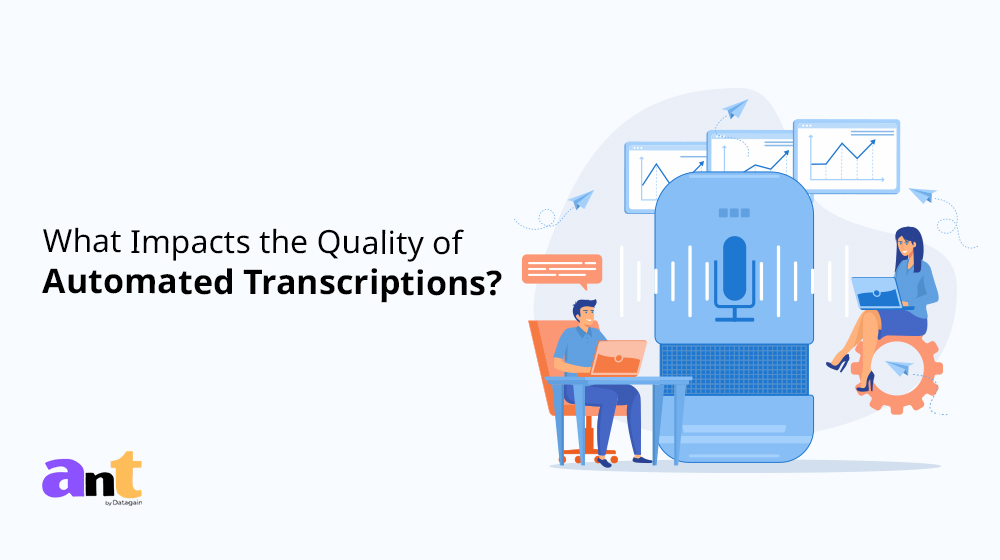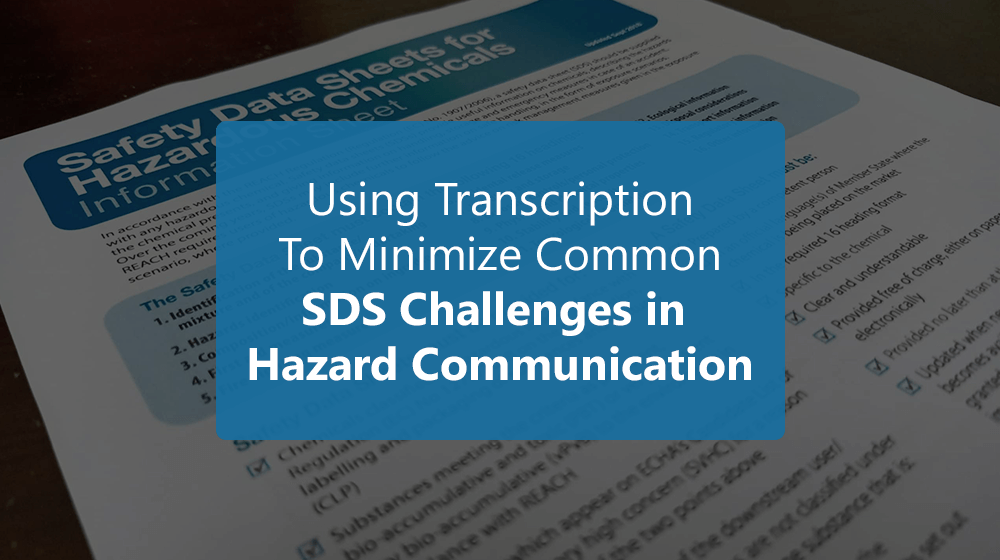What Impacts the Quality of Automated Transcriptions?

Home » Blog » transcript » What Impacts the Quality of Automated Transcriptions?
In recent years, automated transcription services have gained significant popularity due to their efficiency and cost-effectiveness. These services utilize advanced technology to convert spoken language into written text, making them a valuable tool for various industries such as media, legal, education, and healthcare. However, the quality of automated transcriptions can vary significantly based on several factors. In this article, we will explore the key elements that impact the quality of automated transcriptions and how these factors influence the accuracy and reliability of the transcriptions produced.
1. Audio Quality
One of the most crucial factors affecting the quality of automated transcription services is the quality of the audio being transcribed. Clear, high-quality audio files result in more accurate transcriptions. Factors such as background noise, poor microphone quality, and low volume can significantly hinder the transcription process. Background noises like traffic, conversations, or any other ambient sounds can confuse the transcription software, leading to errors and inaccuracies.
At Ant Datagain, we specialize in transcription services that blend AI and human expertise to enhance poor-quality audio and video, ensuring 99.99% accuracy. Our transcriptionists work alongside advanced AI tools, including machine learning algorithms and terminology databases, to deliver precise and culturally authentic transcriptions. This cost-effective approach not only meets specific client needs but also maintains high standards at competitive rates.
2. Speaker Identification and Differentiation
Automated transcription services often struggle with accurately identifying and differentiating between multiple speakers in a conversation. This challenge becomes more pronounced in scenarios with overlapping dialogue or when speakers have similar voices. Accurate speaker identification is crucial for producing coherent and reliable transcriptions, especially in interviews, meetings, or panel discussions.
To address this issue, some advanced automated transcription services incorporate speaker diarization features, which aim to distinguish between different speakers. However, the accuracy of these features can vary, and manual review may still be necessary to ensure precise speaker attribution.
3. Context and Subject Matter
The context and subject matter of the audio content can significantly impact the performance of automated transcription services. Technical jargon, specialized terminology, and industry-specific language can be challenging for transcription software to interpret accurately. For example, medical, legal, or scientific discussions often involve complex vocabulary that may not be part of the software’s standard lexicon.
To improve the accuracy of transcriptions involving specialized content, it may be beneficial to use automated transcription services that offer customizable vocabularies or the ability to train the software on specific terminology. Providing context or additional information about the subject matter can also aid in producing more accurate transcriptions.
4. Speech Clarity and Pronunciation
The clarity of speech and pronunciation also plays a vital role in the quality of automated transcriptions. Clear and distinct speech is easier for transcription software to process accurately. Accents, dialects, and variations in pronunciation can pose challenges for automated transcription services, potentially leading to misinterpretations or errors in the transcribed text.
Speakers should aim to articulate their words clearly and avoid mumbling or speaking too quickly. In cases where multiple speakers are involved, ensuring that each speaker is distinguishable and not speaking over one another can greatly enhance the quality of the transcription.
5. Language Models and Algorithms
The underlying language models and algorithms used by automated transcription services are fundamental to their performance. These models are trained on vast amounts of text and audio data to recognize and transcribe spoken language. The quality and diversity of the training data, as well as the sophistication of the algorithms, directly influence the accuracy of the transcriptions.
Different transcription services use varying models and algorithms, resulting in differences in transcription quality. Continual advancements in natural language processing (NLP) and machine learning are enhancing the capabilities of automated transcription services, but users should choose services that leverage state-of-the-art technology to achieve the best results.
6. Accent and Dialect Handling
The ability of automated transcription services to handle different accents and dialects is a critical factor in their overall quality. Accents and dialects introduce variations in pronunciation, intonation, and speech patterns, which can be challenging for transcription software to accurately interpret. Some services are better equipped to handle a wide range of accents and dialects due to extensive training on diverse speech data.
When selecting an automated transcription service, it is important to consider whether the service has been trained on a broad spectrum of accents and dialects relevant to your needs. Services that offer language customization options can also help improve transcription accuracy for specific linguistic variations.
7. Real-Time vs. Batch Transcription
Automated transcription services can operate in real-time or batch mode. Real-time transcription provides instant text output as the audio is being spoken, making it useful for live events, webinars, or meetings. Batch transcription, on the other hand, processes pre-recorded audio files and may allow for more thorough analysis and error correction.
The choice between real-time and batch transcription can impact the quality of the transcriptions. Real-time transcription services may sacrifice some accuracy for speed, while batch transcription services have the advantage of processing audio more meticulously. Users should weigh the trade-offs based on their specific requirements.
8. Language Support
The quality of automated transcription services can also be influenced by the range of languages they support. Services that offer robust language support are often more capable of accurately transcribing content in different languages. Additionally, the ability to transcribe multilingual audio, where speakers switch between languages, is an important consideration for international or diverse audiences.
9. User Customization and Feedback
Some automated transcription services allow users to customize the transcription process by adding custom vocabularies, adjusting settings, or providing feedback on transcription accuracy. These features can significantly enhance the quality of the transcriptions, especially for content with specialized terminology or unique requirements.
User feedback mechanisms enable continuous improvement of the transcription models by incorporating corrections and suggestions from users. Services that prioritize user customization and feedback tend to deliver higher quality transcriptions over time.
10. Integration with Other Tools
The quality of automated transcriptions can be affected by how well the transcription service integrates with other tools and workflows. Seamless integration with video conferencing platforms, content management systems, and editing software can streamline the transcription process and reduce the likelihood of errors during data transfer.
Automated transcription services that offer API access and compatibility with various software applications provide greater flexibility and efficiency for users. This integration ensures that transcriptions are easily accessible and can be edited or reviewed within the user’s preferred tools.
Conclusion
Automated transcription services have revolutionized the way we convert spoken language into written text, offering significant advantages in terms of speed and cost. However, the quality of these transcriptions can vary based on multiple factors, including audio quality, speech clarity, context, language models, and user customization.
To achieve the best results, it is crucial to choose a reputable automated transcription service that prioritizes accuracy and efficiency. Ant Datagain stands out as a leading provider of both automated and manual transcription services, delivering high-quality transcriptions with precision and reliability. With a commitment to accuracy and a comprehensive understanding of various transcription needs, Ant Datagain ensures that users receive the best possible transcription services to meet their requirements. Whether for media, legal, education, or any other industry, Ant Datagain’s automated transcription services provide a dependable solution for converting spoken words into accurate written text.
















